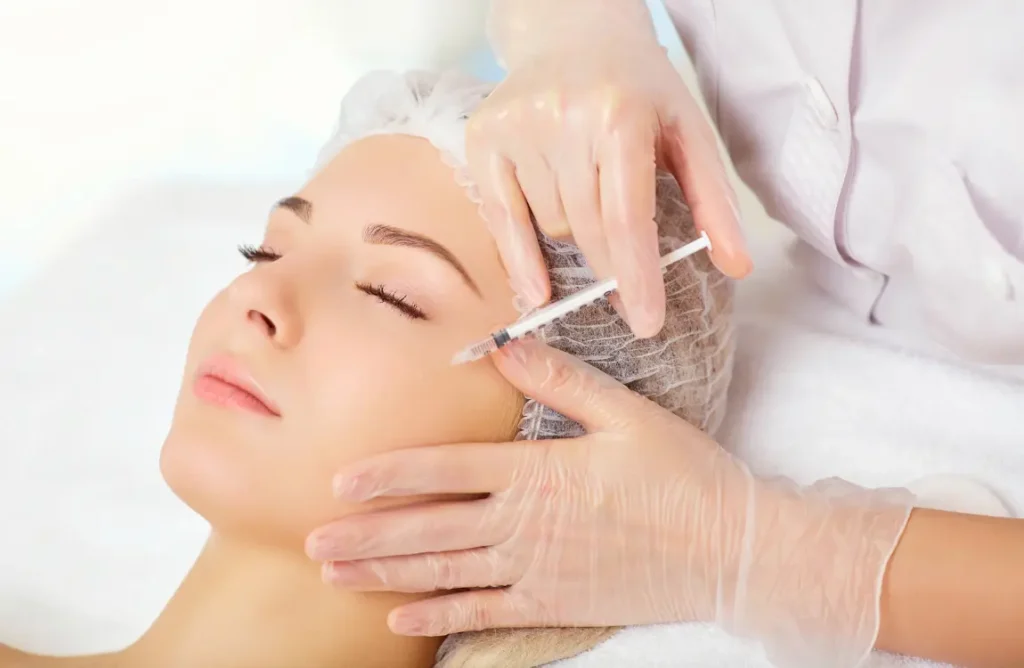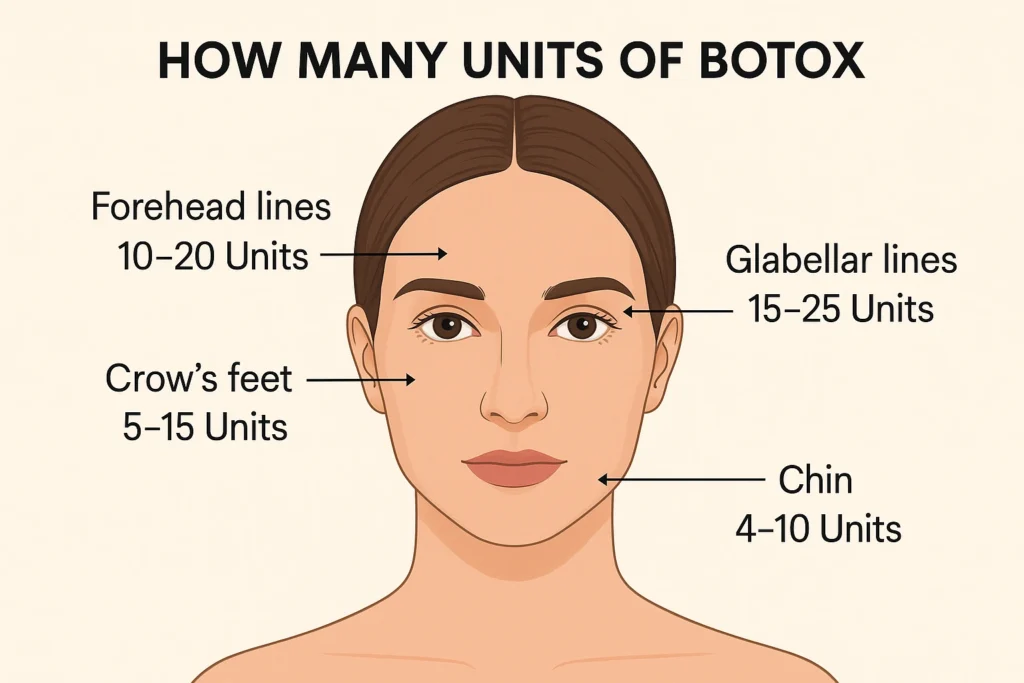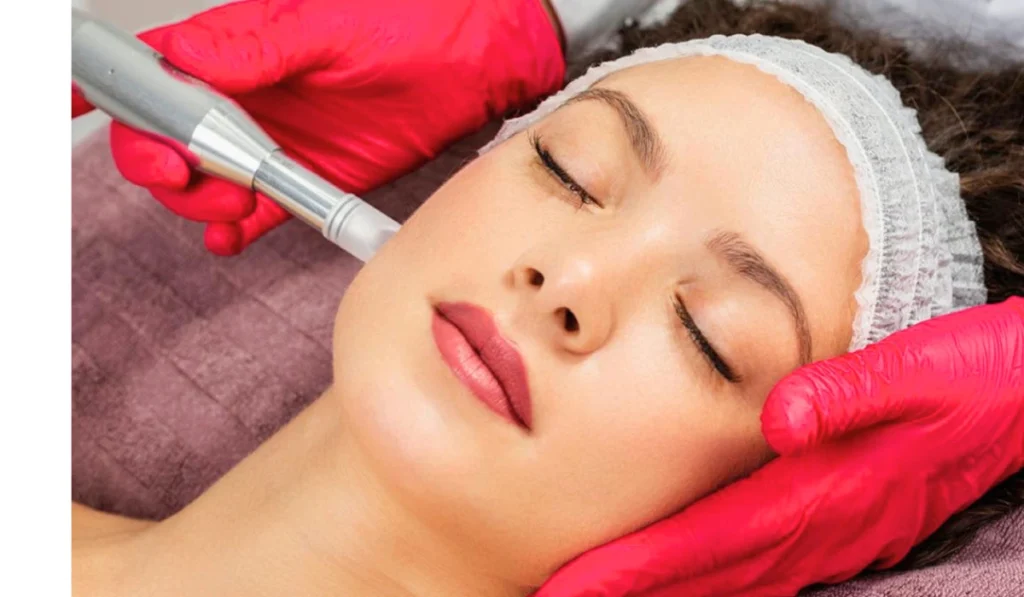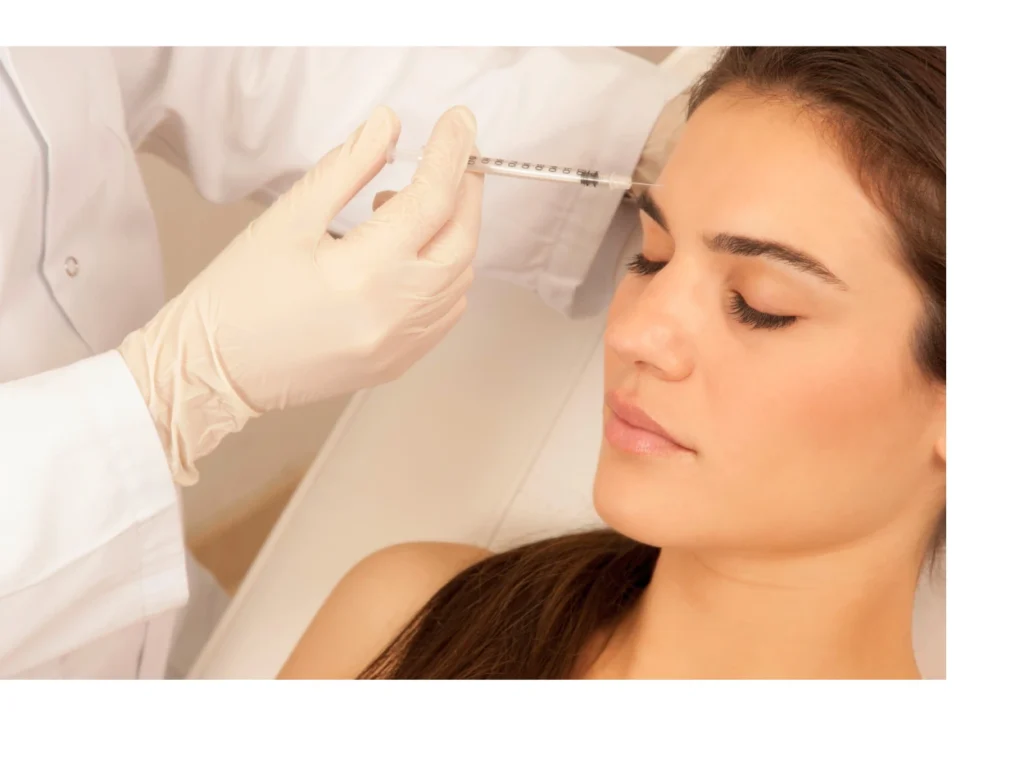Hydrafacial treatments are popular for glowing, healthy skin. But how often should you get one?
The answer depends on your skin type and goals. Hydrafacials are a favorite among skincare enthusiasts for good reason. They offer a non-invasive way to cleanse, exfoliate, and hydrate your skin, leaving it looking fresh and rejuvenated. Deciding how frequently to schedule these treatments can be confusing.
Your skin’s needs and your skincare objectives play a key role. Some people benefit from monthly sessions, while others might find seasonal treatments more suitable. Understanding your unique skin requirements can help you make an informed decision, ensuring you get the best results without overdoing it. Let’s explore how often you should get a Hydrafacial for optimal skin health.

Credit: justmelt.com
Benefits Of Hydrafacial
Hydrafacial treatments are popular for their ability to improve skin health. They offer immediate and long-term benefits, making them a great addition to your skincare routine.
Immediate Results
After a Hydrafacial, you will notice immediate results. Your skin will look fresh and hydrated. Pores will appear smaller, and your face will have a healthy glow. The treatment helps to remove dead skin cells and impurities. It also infuses your skin with serums that promote hydration and elasticity.
Many people find their skin looks brighter and smoother right after the session. This makes Hydrafacial an excellent choice before a special event or photo shoot.
Long-term Skin Health
Regular Hydrafacial treatments can lead to long-term skin health. These sessions help to reduce the appearance of fine lines and wrinkles. They also improve skin texture and tone. Over time, your skin will look healthier and younger.
Hydrafacials promote better skin health by boosting collagen production. This helps to keep your skin firm and elastic. They also improve circulation, which nourishes your skin cells and keeps them healthy.
For best results, consider getting a Hydrafacial once a month. This frequency can help maintain your skin’s health and appearance.
How Hydrafacial Works
Understanding how a Hydrafacial works can help you appreciate the benefits of this treatment. This non-invasive procedure combines cleansing, exfoliation, hydration, and antioxidant protection in a single session. Below, we break down each step to explain how the treatment revitalizes your skin.
Cleansing And Exfoliation
During the cleansing and exfoliation phase, a specialized device removes dead skin cells and excess sebum. This stage helps clear your pores and prepares your skin for the next steps. Using a gentle vacuum, it lifts away impurities, leaving your skin smooth and clean. This process is painless and quick, taking only a few minutes.
Hydration And Antioxidant Protection
The next stage focuses on hydration and antioxidant protection. The device infuses your skin with a nourishing serum, which contains essential vitamins, peptides, and hyaluronic acid. This boosts your skin’s moisture levels, making it look plump and radiant. Additionally, antioxidants protect your skin from free radicals, which can cause aging and damage. This protection helps maintain your skin’s health over time.
Ideal Frequency For Different Skin Types
Hydrafacial treatments offer a unique approach to skincare. They cater to various skin types and provide numerous benefits. The ideal frequency for these treatments can vary based on your specific skin type. Understanding your skin’s needs will help you maximize the benefits of Hydrafacials.
Oily Skin
Oily skin can benefit greatly from regular Hydrafacials. This skin type produces excess sebum, leading to clogged pores and acne. A Hydrafacial helps to cleanse and reduce oil production.
- Frequency: Every 2-3 weeks
- Benefits: Reduces oil production, unclogs pores, prevents breakouts
Regular treatments help maintain a balanced oil level and clearer skin.
Dry Skin
Dry skin lacks moisture and can appear flaky or rough. Hydrafacials provide hydration and exfoliation, making them ideal for dry skin.
- Frequency: Every 4-6 weeks
- Benefits: Adds moisture, smooths texture, improves radiance
Consistent treatments keep the skin hydrated and glowing.
Combination Skin
Combination skin has both oily and dry areas. Hydrafacials can balance these differences effectively.
- Frequency: Every 3-4 weeks
- Benefits: Balances oil and moisture, clears pores, smooths texture
Regular treatments maintain overall skin health and balance.

Credit: justmelt.com
Factors Influencing Hydrafacial Frequency
Understanding how often to get a Hydrafacial depends on several factors. Your age, specific skin concerns, and lifestyle all play a role. This section will help you determine the right frequency for your Hydrafacial treatments.
Age
Your age significantly impacts the frequency of Hydrafacial treatments. Younger skin typically requires less maintenance. Individuals in their 20s might benefit from a Hydrafacial every 3-4 months. As you age, skin issues like fine lines and wrinkles become more prominent. People in their 30s and 40s may need treatments every 6-8 weeks.
Skin Concerns
Different skin issues dictate how often you should get a Hydrafacial. Common concerns include:
- Acne and Breakouts: Monthly treatments can help control acne.
- Hyperpigmentation: Bi-monthly sessions may reduce dark spots.
- Fine Lines and Wrinkles: More frequent treatments, every 4-6 weeks, can be beneficial.
Consult your dermatologist to tailor a plan for your specific skin needs.
Lifestyle Factors
Your lifestyle also affects how often you should get a Hydrafacial. Factors to consider include:
| Factor | Impact |
|---|---|
| Stress Levels | High stress can lead to more frequent treatments. |
| Diet | Poor diet might necessitate more regular sessions. |
| Exposure to Pollution | Living in a polluted area may require monthly treatments. |
Assess your daily habits to determine the best frequency for you.
Seasonal Considerations
Getting a Hydrafacial can help keep your skin healthy and glowing. But how often should you get one? Your skin’s needs change with the seasons. This means you might need more frequent treatments at certain times of the year. Let’s explore how the seasons affect your skin and how often you should get a Hydrafacial.
Summer Skin Needs
Summer brings heat and humidity. This can lead to oily skin and clogged pores. You might notice more breakouts during this time. A Hydrafacial can help clear out impurities. It can also provide hydration without adding more oil. Consider getting a Hydrafacial every two weeks in summer. This will help keep your skin clean and fresh.
Winter Skin Needs
Winter is a different story. Cold weather and indoor heating can dry out your skin. You might experience flakiness and irritation. A Hydrafacial can provide deep hydration. It can also soothe and repair your skin. During winter, aim for a Hydrafacial once a month. This will help maintain moisture and protect your skin from harsh elements.
Professional Recommendations
Experts recommend getting a Hydrafacial every 4-6 weeks. This frequency ensures optimal skin health and a radiant complexion. Regular treatments help maintain clear and hydrated skin.
Deciding how often to get a Hydrafacial can be tricky. Professional advice can help you make the best choice for your skin. Two key sources of expert guidance are dermatologists and estheticians. They each offer unique insights.Dermatologist Advice
Dermatologists are skin experts. They understand different skin types and conditions. Most recommend getting a Hydrafacial every four to six weeks. This frequency helps maintain clear, hydrated skin. For those with specific skin issues, a dermatologist might suggest a different schedule. Always listen to a dermatologist’s personalized advice.Esthetician Insights
Estheticians also provide valuable advice. They perform Hydrafacials regularly and see the results firsthand. Many estheticians suggest monthly treatments. This helps keep your skin in top condition. Some estheticians might recommend more frequent sessions for certain skin concerns. Their insights are based on experience and client feedback. Following professional recommendations can lead to better skin health. Both dermatologists and estheticians offer useful guidance. Choose a schedule that fits your skin’s needs. “`Hydrafacial Aftercare Tips
Hydrafacials are a fantastic way to rejuvenate your skin. After your treatment, it’s essential to follow proper aftercare to maintain the results. This will help keep your skin looking fresh and glowing for longer. Here are some key tips to follow.
Immediate Post-treatment Care
Right after your Hydrafacial, your skin will be sensitive. Avoid direct sunlight for at least 24 hours. Use a gentle cleanser to wash your face. Refrain from using any exfoliating products. Also, avoid heavy makeup for the first day.
Hydrate your skin well. Drink plenty of water. Use a high-quality moisturizer. This helps in keeping your skin plump and hydrated. Apply sunscreen before stepping out. Choose one with at least SPF 30. This protects your skin from harmful UV rays.
Long-term Maintenance
For long-term benefits, maintain a regular skincare routine. Cleansing, moisturizing, and sun protection are key. Incorporate gentle, hydrating products into your daily regimen. Consider getting Hydrafacials once a month. This helps in keeping your skin healthy and glowing.
Eat a balanced diet rich in fruits and vegetables. These foods are good for your skin. Stay hydrated by drinking enough water daily. Avoid smoking and limit alcohol consumption. These habits can harm your skin.
By following these Hydrafacial aftercare tips, you can enjoy radiant skin. Regular care ensures the longevity of your treatment results.
Combining Hydrafacial With Other Treatments
Combining a Hydrafacial with other treatments can enhance your skin’s health. A Hydrafacial is a versatile procedure. It can be paired with various other treatments for maximum benefits. This approach allows you to address multiple skin concerns in one session. Here, we will explore some complementary treatments and discuss their safety and timing.
Complementary Treatments
Many treatments complement a Hydrafacial well. Chemical peels can enhance the exfoliation process. Microneedling can improve skin texture and tone. LED light therapy can reduce inflammation and promote healing. Dermaplaning can remove dead skin cells and peach fuzz. These treatments work together to improve overall skin appearance.
Safety And Timing
Combining treatments requires careful timing. It’s essential to consult with a skincare professional. They can advise on the safest and most effective schedule. Some treatments may need to be spaced out. This ensures your skin has time to heal and respond. For example, microneedling should be done at least a week before a Hydrafacial. Chemical peels might need a few days in between sessions. Always follow professional advice to avoid overloading your skin.
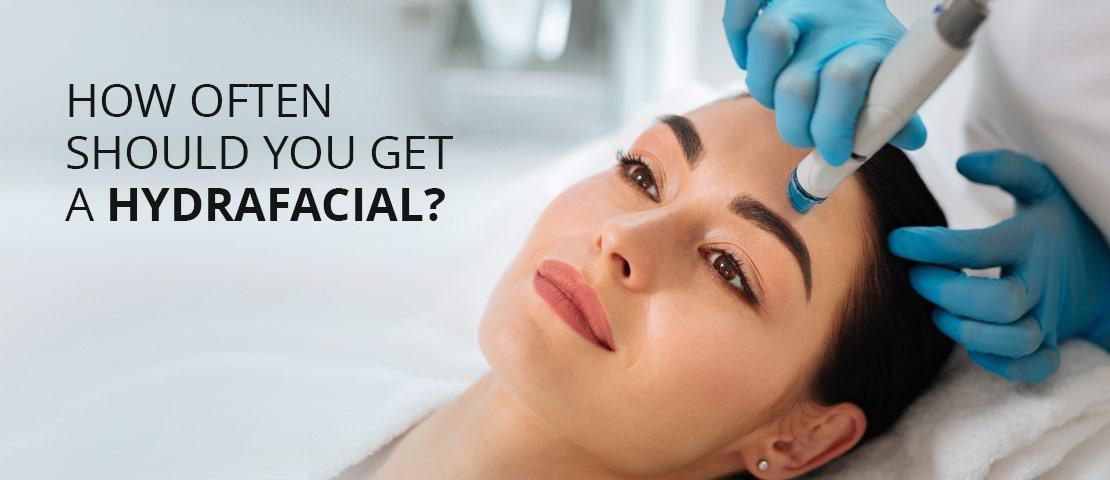
Credit: www.wardinstitute.com
Frequently Asked Questions
What Is A Hydrafacial?
A Hydrafacial is a non-invasive facial treatment. It combines cleansing, exfoliation, extraction, hydration, and antioxidant protection. It helps improve skin appearance.
How Often Should I Get A Hydrafacial?
For best results, get a Hydrafacial every 4 to 6 weeks. This ensures consistent skin improvement and maintenance. Always consult your dermatologist.
Is Hydrafacial Suitable For All Skin Types?
Yes, Hydrafacial is suitable for all skin types. It addresses various skin concerns like dryness, aging, and acne. Always consult a professional.
What Are The Benefits Of Hydrafacial?
Hydrafacial provides deep cleansing, exfoliation, and hydration. It improves skin texture, tone, and overall appearance. It’s a quick and effective treatment.
Conclusion
Regular Hydrafacials keep your skin healthy and glowing. Most people benefit from monthly treatments. This schedule maintains hydration and clears pores. Listen to your skin’s needs. Consult a professional for personalized advice. Your skin type and concerns matter. Consistent care leads to better results.
Make Hydrafacials part of your routine. Enjoy the benefits of refreshed and vibrant skin. Visit your skincare expert to start your journey. Keep glowing and feeling confident. Your skin deserves the best care. Prioritize your skincare regimen for lasting beauty.



